Chipmunk
- December 19, 2023
- 0 comment
The chipmunk, a small and lively member of the Sciuridae family, is a familiar sight in various ecosystems across North America, Asia, and parts of Europe. Known for their distinctive stripes and cheek pouches, chipmunks are characterized by their compact size, typically ranging from 5 to 7 inches in length, including their bushy tails. These charming rodents are easily identified by the stripes that run along their backs, with alternating dark and light bands, giving them a visually striking appearance. Chipmunks are diurnal creatures, active during daylight hours, and are adept climbers, using their sharp claws for both foraging and navigating their surroundings.
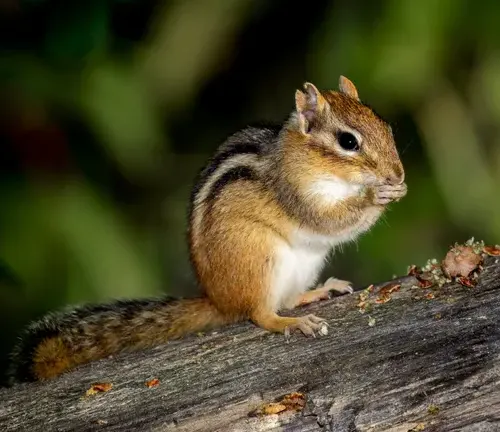
While chipmunks generally play a crucial role in their ecosystems by aiding in seed dispersal and insect control, conflicts can arise when they encroach upon human habitation. Homeowners often find themselves in disputes with chipmunks over raided bird feeders, dug-up gardens, and potential damage to property. Despite their sometimes troublesome behaviors, chipmunks are not typically subjected to specific legal protections or conservation concerns, as they are widespread and not listed as endangered species. Local regulations may vary, however, and it’s advisable to be aware of any relevant guidelines regarding chipmunks in specific regions.
Chipmunks exhibit a broad species range, with various species found in different parts of the world. In North America, the Eastern Chipmunk is prevalent, while the Siberian Chipmunk is found in parts of Asia. Their adaptability allows them to thrive in a variety of habitats, ranging from woodlands and meadows to suburban areas, showcasing their resilience in diverse environments.
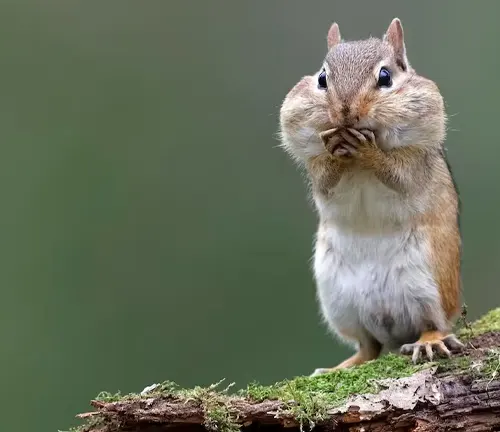
While chipmunks are generally harmless and pose no direct threat to humans, health and safety concerns may arise due to their potential to carry ticks and fleas. These parasites can transmit diseases to both humans and pets, necessitating caution when in close proximity to chipmunk habitats. Implementing preventive measures, such as securing trash bins and pet food, can help mitigate conflicts and ensure a more harmonious coexistence between humans and chipmunks.
| Category | Description |
|---|---|
| Family | Sciuridae |
| Size | 5 to 7 inches (including tail) |
| Appearance | Distinctive stripes along the back, alternating dark and light bands; cheek pouches |
| Activity | Diurnal (active during daylight hours) |
| Climbing Ability | Adept climbers with sharp claws |
| Habitat | Diverse habitats, including woodlands, meadows, and suburban areas |
| Species Range | Found in North America, Asia, and parts of Europe |
| Common Species | Eastern Chipmunk (North America), Siberian Chipmunk (Asia) |
| Legal Status | Generally not subjected to specific legal protections or conservation concerns; local regulations may vary |
| Conflicts | Common conflicts with homeowners over raided bird feeders, gardens, and potential property damage |
| Health Concerns | Potential carriers of ticks and fleas, which can transmit diseases to humans and pets |
| Conservation Status | Widespread and not listed as endangered; specific species may have varying conservation statuses |
The Enigmatic World of Chipmunks

General Biology of Chipmunks
Chipmunks, members of the Sciuridae family, captivate with their charming appearance and energetic demeanor. Typically ranging from 5 to 7 inches in length, these small mammals are distinguished by their striking stripes and cheek pouches. Chipmunks, diurnal creatures, are known for their adept climbing abilities, using sharp claws to navigate their surroundings and forage for food. With a keen sense of curiosity, chipmunks play an essential role in various ecosystems across North America, Asia, and parts of Europe.
Reproduction
The chipmunk’s life cycle unfolds with the intriguing process of reproduction. Typically, chipmunks breed once or twice a year, and the gestation period lasts around 31 days. The female chipmunk, known as a doe, gives birth to a litter of three to five young, called pups. These pups are born blind, hairless, and entirely dependent on their mother for care. As they grow, the doe diligently tends to their needs, nurturing them until they are ready to explore the world on their own.
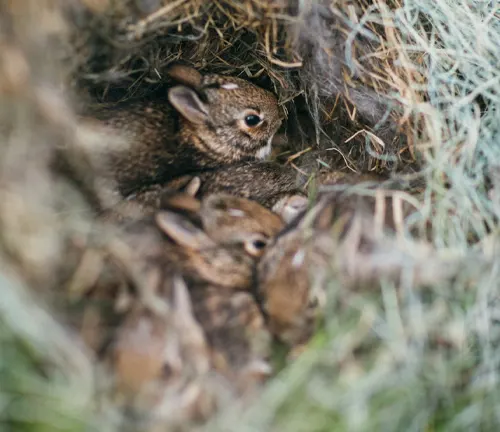
Behavior
Chipmunks exhibit a range of behaviors that contribute to their survival and adaptability. Their diurnal nature means they are most active during daylight hours, and their behavior is characterised by energetic foraging and quick movements. These rodents are skilled burrowers, creating intricate tunnel systems that serve as both shelter and food storage. Chipmunks are also known for their cheek pouches, which they use to transport food to their burrows efficiently.
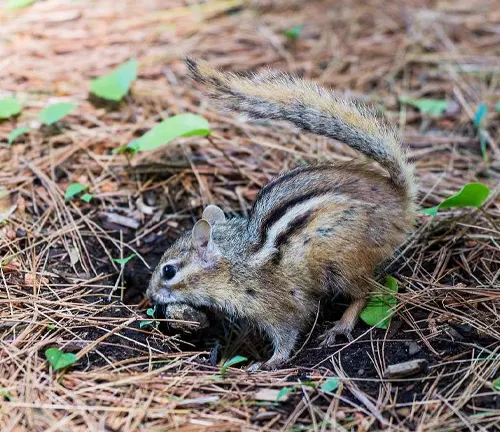
Nesting/Denning Cover
Nesting and denning are crucial aspects of chipmunk behavior, contributing to their survival and reproduction. Chipmunks often choose well-concealed locations for their nests, utilizing tree roots, rocks, or logs to create secure and hidden dwellings. These nests provide protection for both adults and young, ensuring a safe and comfortable environment for the chipmunk family.
Habitat
Chipmunks display remarkable adaptability to various habitats, ranging from woodlands and meadows to suburban areas. Their versatility allows them to thrive in diverse environments, demonstrating a remarkable ability to coexist with human activities. Chipmunks are commonly found in North America, with species such as the Eastern Chipmunk, and in parts of Asia, represented by the Siberian Chipmunk.
Food Habits
A crucial aspect of chipmunk life revolves around their food habits. These omnivorous creatures have a varied diet that includes seeds, nuts, fruits, and insects. Chipmunks are known for their habit of storing food in their cheek pouches and transporting it to their burrows for later consumption. This behavior not only sustains them during periods of scarcity but also contributes to seed dispersal in their natural habitats.

Voice, Sounds, Tracks, and Signs
Chipmunks communicate through a repertoire of vocalisations, sounds, tracks, and signs. Their vocalisations include chirps, chatters, and high-pitched squeaks, which serve as social signals or warnings of potential threats. Chipmunks also leave distinctive tracks and signs in their surroundings, providing clues to their activities and behaviors. These markings include gnawed nuts, burrow entrances, and tracks that can be identified by their unique patterns.
An In-Depth Look at Damage Identification
Understanding Chipmunk Behavior
Chipmunks, with their charming appearance and lively antics, are delightful creatures to observe. However, their proximity to human habitation can sometimes lead to challenges, particularly in identifying and addressing potential damage. Understanding the nature of chipmunk-related issues is crucial for implementing effective solutions.
Unearthing the Impact
Chipmunks, with their burrowing instincts, can significantly impact landscapes. Their intricate tunnel systems can disturb the soil structure, leading to the destabilization of plants and vegetation. Lawns, gardens, and flowerbeds are particularly susceptible, as chipmunks may dig for seeds, bulbs, and roots, causing unsightly and potentially damaging disturbances.

Navigating Agricultural Concerns
In agricultural settings, chipmunks can pose challenges by foraging for crops and seeds. While their individual impact may be small, the cumulative effect of a chipmunk population can lead to diminished yields and economic losses for farmers. Livestock may also be affected indirectly, as chipmunks can compete for food resources in the surrounding environment.
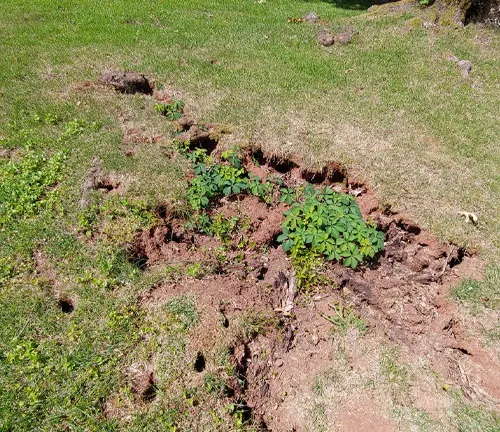
Beyond the Burrows
Chipmunks’ natural inclination to burrow can extend to structures, leading to potential damage. Burrows near foundations can undermine the stability of buildings, walkways, and retaining walls. Additionally, chipmunks may gnaw on wood, electrical wiring, and other materials, causing structural and safety concerns for homeowners.
Proactive Measures
Habitat Modification
Altering the landscape to make it less conducive to chipmunks can be a proactive step. This may involve removing brush piles, sealing off potential nesting sites, and minimizing available food sources.

Exclusion Techniques
Physical barriers, such as mesh or hardware cloth, can be used to exclude chipmunks from specific areas. This is particularly effective in protecting gardens and structures.
Repellents:
Natural or commercial repellents can be applied to deter chipmunks from targeted areas. These substances create an environment that is less appealing to chipmunks, reducing the likelihood of damage.

Humane Trapping
Live traps can be employed for humane removal of chipmunks. Once captured, the animals can be safely relocated to more suitable habitats, mitigating damage while ensuring the well-being of the chipmunks.
Different Species
Eastern Chipmunk
(Tamias striatus)
Found in eastern North America, from southern Canada to the eastern United States.
Recognizable by the five dark stripes on their backs.
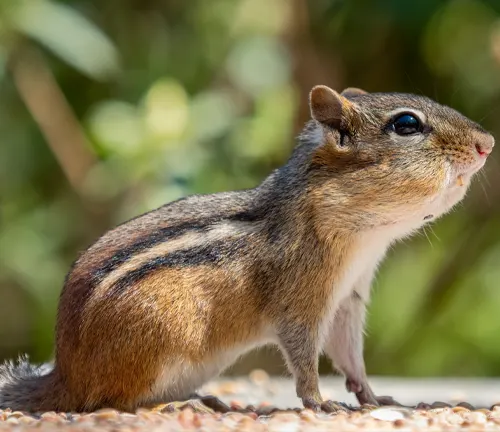
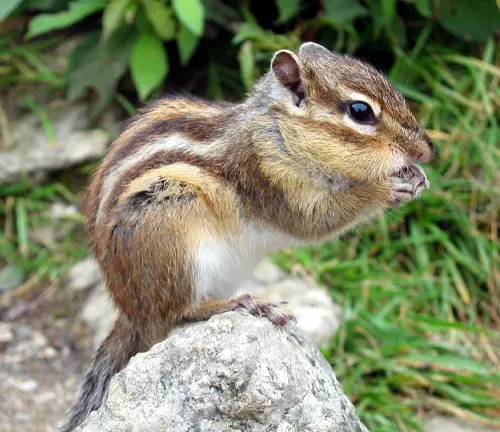
Siberian Chipmunk
(Tamias sibiricus)
Native to parts of Asia, including Siberia, Korea, and China. Introduced to some European countries as well.
California Chipmunk
(Tamias obscurus)
Inhabits the western United States, particularly in California. Features a grayish-brown coat with five dark stripes.
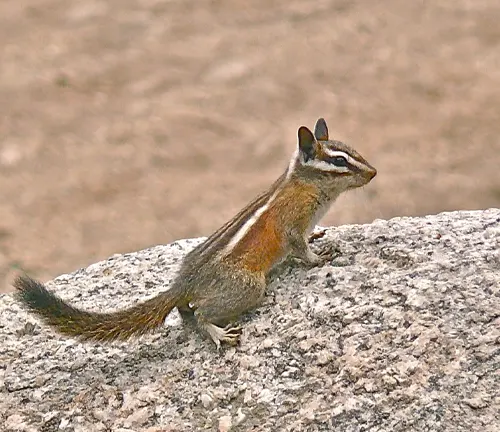
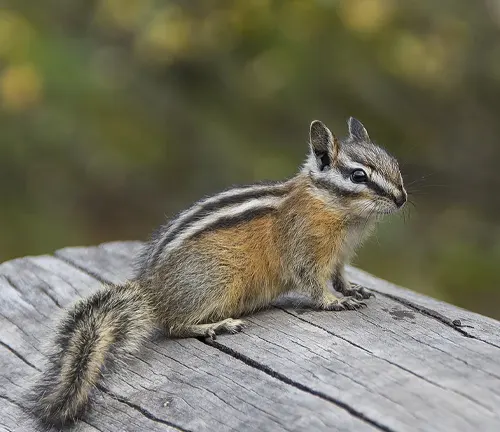
Least Chipmunk
(Tamias minimus)
Found in North America, from Canada to the northern United States. Smallest chipmunk species with a shorter tail and lighter coloring.
Yellow-pine Chipmunk
(Tamias amoenus)
Inhabits western North America, from Canada to Mexico. Often found in coniferous forests and mountainous regions.
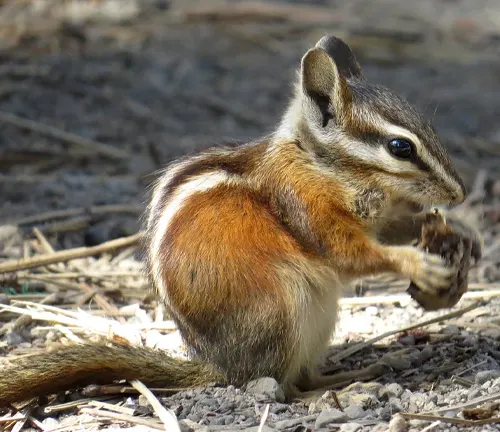

Townsend’s Chipmunk
(Tamias townsendii)
Native to the western United States, from California to Washington.
Prefers forested areas and is known for its distinctive facial markings.
Uinta Chipmunk
(Tamias umbrinus)
Found in the Rocky Mountains and surrounding areas in North America.
Recognizable by its buff or grayish coat with dark stripes.
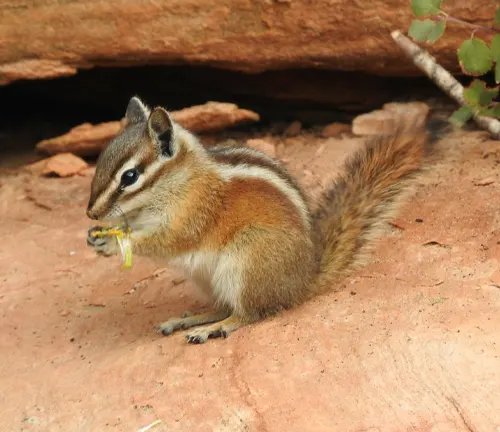
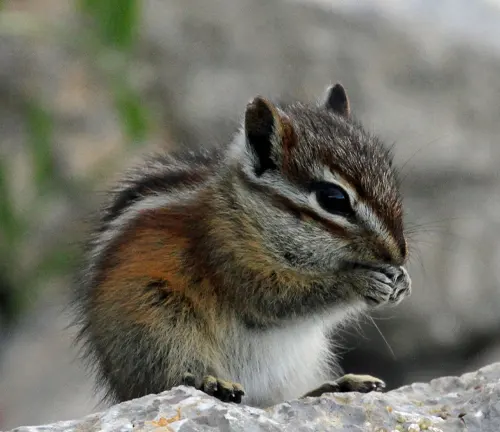
Gray-footed Chipmunk
(Tamias canipes)
Inhabits the southwestern United States and northern Mexico. Distinguished by its gray feet and dark stripes on a pale background.
Allen’s Chipmunk
(Tamias senex)
Found in the western United States, particularly in mountainous regions. Characterized by its reddish-brown color and facial stripes.
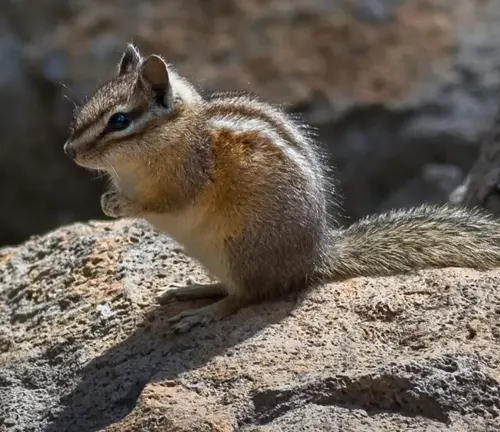
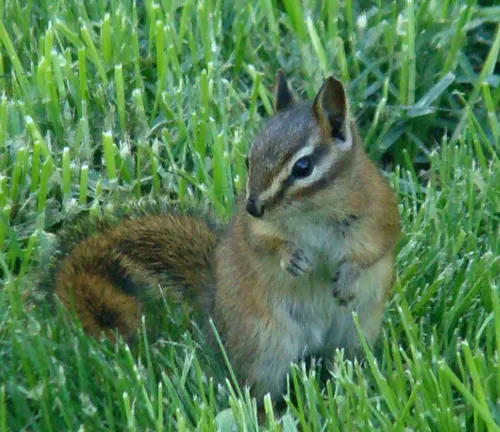
Red-tailed Chipmunk
(Tamias ruficaudus)
Native to western North America, from Canada to Mexico. Features a rusty-red tail and a distinctive white stripe above the eye.
Frequently Asked Questions (FAQs)
1. What do chipmunks eat?
Chipmunks have an omnivorous diet that includes seeds, nuts, fruits, insects, and sometimes fungi. They store food in their cheek pouches and burrows for later consumption.
2. Where do chipmunks live?
Chipmunks are found in a variety of habitats, including woodlands, meadows, gardens, and suburban areas. They are adaptable and can thrive in diverse environments.
3. Do chipmunks hibernate?
While chipmunks do not truly hibernate, they enter a state of torpor during the winter, where they remain less active and sleep for longer periods. They wake periodically to eat stored food.
4. How long do chipmunks live?
In the wild, chipmunks typically live around 2-3 years. However, their lifespan can be shorter due to predation and other environmental factors.
5. Are chipmunks aggressive?
Chipmunks are generally not aggressive towards humans, but they can be territorial and may exhibit aggression towards other chipmunks. They may also defend themselves if they feel threatened.
6. Can chipmunks be kept as pets?
In many places, it’s illegal to keep chipmunks as pets without the proper permits. Additionally, chipmunks have specific dietary and environmental needs that can be challenging to meet in a home setting.
7. How do chipmunks communicate?
Chipmunks communicate using a variety of vocalizations, including chirps and high-pitched sounds. They may also use body language and scent markings to communicate with each other.
8. Do chipmunks carry diseases?
Chipmunks can carry parasites like ticks and fleas, which may transmit diseases. It’s essential to take precautions and practice good hygiene when dealing with chipmunk habitats.
9. How fast can chipmunks run?
Chipmunks are agile runners and can reach speeds of up to 15 miles per hour. Their quick movements help them escape from predators.
10. How many babies do chipmunks have?
Chipmunks typically have litters of 3 to 5 babies, known as pups. The female, called a doe, cares for the pups until they are old enough to fend for themselves.
11. Do chipmunks hibernate in burrows?
Chipmunks create extensive burrow systems, which they use for shelter, food storage, and sometimes hibernation. These burrows provide protection during winter torpor.
12. How can I prevent chipmunks from damaging my garden?
Implementing strategies such as habitat modification, exclusion, and the use of repellents can help deter chipmunks from causing damage in gardens. These methods aim to make the environment less attractive to chipmunks.




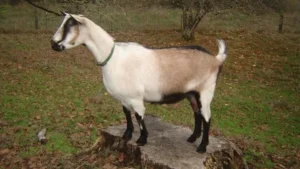


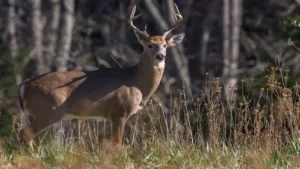
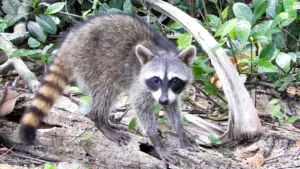

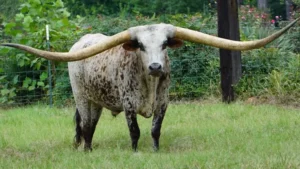



Leave your comment